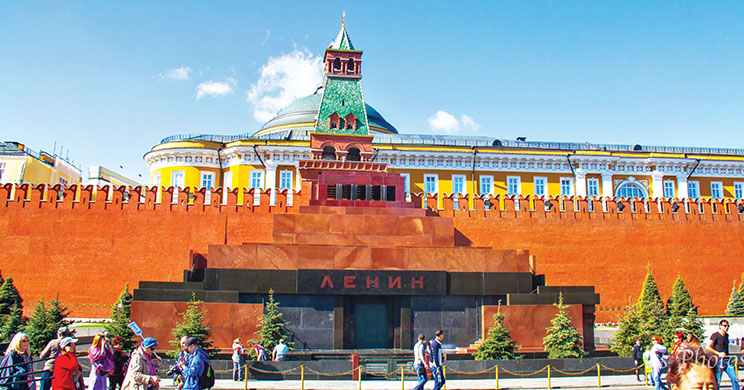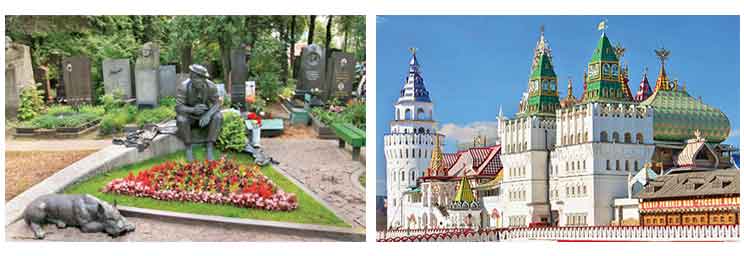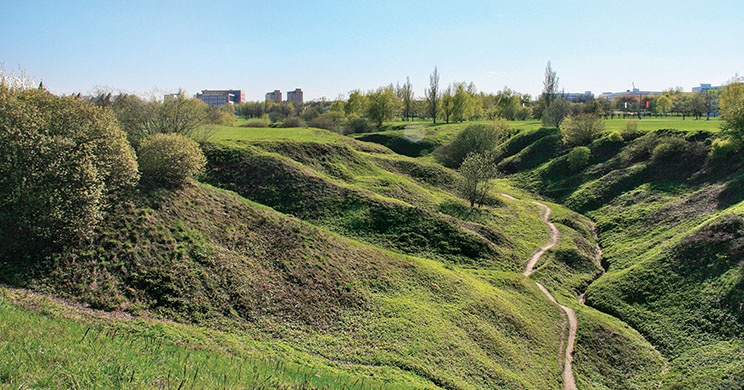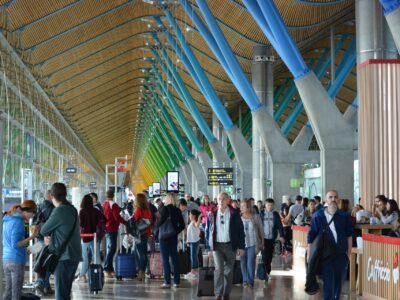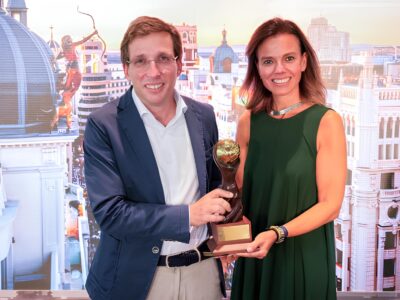Russia is full of mysteries and adventures, especially for thrill-seeking wanderlusts with a penchant for historical quest. Take a tour along the narrow lanes and hidden paths of the Russian capital, Moscow, to satisfy the quirksof an inquisitive mind.
Considered to be a favourite among travellers, the Russian capital, Moscow moves beyond leisure destinations. Debjit Dutta, the Chairman of Indian Association of Tour Operators (IATO) West Bengal chapter states, “Russia in itself is an offbeat destination for tourists from India. However, amongst the popularly visited places, the capital Moscow ranks first. Having shared a strong historical connection with India over the years, the socio-cultural ties and heritage are often of interest to the outbound Indian. Thereby, in addition to leisure destinations and popular tourist attractions, there are lesser known, offbeat ones.”
Bunker 42
A rendezvous through dark tunnels beneath the streets of Moscow will lead one to a secret museum; the secret Soviet Bunker 42 is also known as the Cold War Museum Moscow. There is also a guided tour through the bunker that divulges the gory details of the long war.
Kremlin Tour a popular private guided tour agency in Moscow describes the site as, “A nondescript neoclassical building on a quiet street in the centre of the city that looks very ordinary. This building was just a shell and served as an entry to the 7,000 sqmeter space, buried deep below streetlevel and was one of the best kept secrets of the USSR. The underground complex was built here in the 1950s in connection with an early threat of nuclear war. It is a museum now.”
Visitors are given a ‘secret pass’ with their photos on it, in a gas mask, and are then led towards an elevator that takes them to the depth of 18 floors (65 metres) beneath Moscow. The facility that then awaits the visitors was once operated as an emergency Command Post Headquarters and long-range aviation communications.
The Bunker 42 was fully equipped with everything needed for survival during a nuclear attack: air recycling system, diesel generators, stocks of food, fuel, artesian wells to provide clean drinking water. Up to 30,000 people could live and work there for 90 days without assistance from the outside world. One entrance to the bunker leads to the Taganskaya metro station. The personnel used to communicate with the complex on special metro trains that ran only at night.
Lenin’s Mausoleum
A popular tourism attraction in Moscow, the Lenin’s Mausoleum is comparatively lesser known to Indian travellers. Lenin’s Tomb located in the heart of Moscow at Red Square, is a mausoleum that currently serves as the resting place of the first Soviet leader Vladimir Lenin. His preserved body has been on public display there since shortly after his death in 1924, with rare exceptions in wartime. It is considered as one of the biggest attractions of Moscow. Every year, around 2.5 million people visit the mausoleum to see the embalmed body of the legendary Russian revolutionary.
The mausoleum is open on Tuesdays, Wednesdays, Thursdays, and Saturdays from 10am to 1pm (Russian time). One can get into the mausoleum through the security checkpoint in Nikolskaya Tower in the Alexander Garden. Admission is free to visitors with the rare exception of visitors checking in with bags for which a fee maybe charged.
Around 1991, there had been some discussion about removing the Kremlin Wall Necropolis and burying Lenin’s body. Then President Boris Yeltsin, with the support of the Russian Orthodox Church, intended to close the tomb and bury Lenin next to his mother, Maria Alexandrovna Ulyanova, at the Volkov Cemetery in St. Petersburg. His successor, Vladimir Putin, opposed this, pointing out that a reburial of Lenin would imply that generations of citizens had observed false values during 70 years of Soviet rule.
Lenin’s body is preserved in sarcophagus. Atlas Obscura, a definitive guidebook, says, “Every eighteen months the corpse undergoes a chemical bath of glycerol and potassium for thirty days while the mausoleum is closed. During this time, Lenin’s clothes are washed and carefully ironed. And every three years, Lenin receives a new suit.”
Sayantan Nandi, a social history enthusiast from Kolkata, who visited the site stated, “It was an overwhelming experience. To read the theories and hear his speeches is one thing, to actually be witness to the man, another. I had grown a keen interest to visit this place after watching the film Goodbye Lenin. It is not everyday you get to see the mortal remains of a man who lived through centuries.”
Novodevichy Cemetery
Considered one of the most famous cemeteries in Moscow, Novodevichy Cemetery lies next to the southern wall of the 16th-century Novodevichy Convent, which is the city’s third most popular tourist site. The cemetery was designed by Ivan Mashkov and inaugurated in 1898.
Considered to be second in burial prestige to the Kremlin Wall Necropolisin, Moscow, the Novodevichy Cemetery includes many significant ‘eternal residents’ in the Russian history. The elaborate graves of Anton Chekov, Mikhail Bulgakov, Nikita Khrushchev, Boris Yeltsin, Aleksey Tolstoy, and other famous Russians attract admiring visitors.
What attract tourists more are the space-age graves of numerous cosmonauts that immortalises their achievements over the years. These graves include that of Gherman Titov, the second man in space, as well as rocket engineers. Pavel Belyayev, who was the first to command the Soviet cosmonaut corps, overseeing the Voskhod 2 mission in 1965 in which the first man walked in space, has the most impressive grave upon which a life-size sculpture of the cosmonaut strides through a portal, presumably to the stars.
Vaibhav Bhatt, a backpacker from Pune, India has a hobby for discovering offbeat destinations across the globe. Bhatt states that visiting the coveted cemetery has been a ‘poetic’ experience. “The Novodevichy Cemetery inspires the inner artist as it captivates with its grappling solitude and melancholy of unforgotten graves.”
Izmailovo Kremlin
The Kremlin in Izmailovo is dubbed as one of the largest fairs of items of fine, decorative and applied arts, national crafts and trades, souvenirs and antiques. This unique center of culture and entertainment is the lesser known Kremlin and is located near the Serebryano-Vinogradny Pond.
Built as a lookalike in Byzantine style, it is based loosely on what palaces in Russia looked like in pre-Petrine times, but more inspired by drawings of Russian fairy tales. This complex is used for weddings as it has a wedding palace, a restaurant and bars. However, it is also used as an amusement park and an open-air museum for children with the theme ‘Old Russia’.
According to the official Moscow Travel Guide site, “Kremlin in Izmaylovo is a museum of museums, which has Museum of Russian dresses and life, Museum of Bells, Museum of Russian Fairy-Tale, Museum of History of Vodka and Museum of Russian Toy gathered in one place.
In the Izmaylovo Kremlin, the Palace of Russian Meal (analog of historical wooden palace of Tsar Alexey Mikhailovich in Izmaylovo) was built where one could taste traditional dishes of different nationalities of Russia, Palace of Happiness – Wedding Palace and also cafe, taverns and ballrooms.”
Golosov Ravine
Venture into the serene wilderness and enjoy bonfires under the open sky as you listen to spine-chilling stories of the mysterious ravine.
The Golosov Ravine, with its legends of time travel and mythical woodland creatures, has caught the fancy of tourists over the years. Also known as Vlasov Ravine, the Golosov is a deep ravine in Moscow that cuts between Kolomenskoe Hill and Dyakovo Hill. At the bottom of the ravine flow several springs and a perennial brook. Once a royal estate, the ravine is now a spot of public enjoyment in the heart of the Kolomenskoye Park.
With ‘confirmed’ stories of time travel and existence of mythical creatures in the ravine, the site has been of traditional importance. The springs at the bottom of the Ravine are considered sacred in Russian Orthodox, neo-pagan, and new age traditions, and contains a neopagan sacred stone shrine consisting of two five-ton rocks called Diviy (radiating ‘female energy’) and Gus (radiating ‘male energy’).
Several visitors come to the ravine for venerating these rocks and to meditate and anoint their bodies in spring water.









